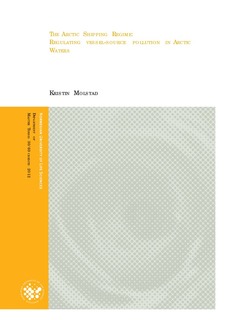| dc.description.abstract | The Arctic Ocean are currently undergoing dramatic changes of decreasing ice cover and increasing human activity – all of them direct consequences of global climate change. This thinning and melting of Arctic ice cover has led to increasing access to natural resources which means more human activity will follow, including shipping. Future scenarios of the Arctic anticipate the opening up of Arctic sea routes, although the opinions and predictions are diverging on whether the Arctic Ocean will ever develop into a central pathway of global trade, at least not in the immediate future. Yet, there is no doubt that Arctic conditions are changing, economic interest and investment in the regions is growing steadily accompanied by a strong concern for the increasingly exposed and vulnerable environment. The question is: Will the current existing international legal regimes for regional maritime governance be adequately equipped to deal with the changing conditions and emerging challenges? | no_NO |
